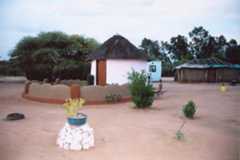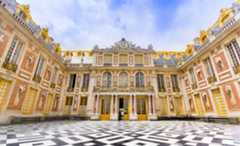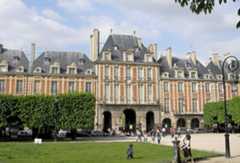Planning for use
Our editors will review what you’ve submitted and determine whether to revise the article.
- HistoryWorld - History of Architecture
- Art in Context - What is Architecture? � A dive into the world of Architecture in art
- Humanities LibreTexts - Architecture Design, Methods, and Materials
- Open Oregon Educational Resources - Introduction to Architecture - Defining architecture
- Stanford Encyclopedia of Philosophy - Philosophy of Architecture
While environmental planning produces comfort for the senses (sight, feeling, hearing) and reflexes (respiration), planning for use or function is concerned with convenience of movement and rest. All activities that demand architectural attention require unique planning solutions tofacilitate them. These solutions are found bydifferentiating spaces for distinct functions, by providing circulation among these spaces, and by designing them to facilitate the actions of thehuman body.
Differentiation
The number of functions requiring distinct kinds ofspace within abuilding depends not only upon the type of building but also upon the requirements of theculture and the habits and activities of the individual patrons. Some houses have a single room with a hearth area, and others have separate areas for cooking, eating, sleeping, washing, storage, and recreation. A meetinghouse with a single hall is sufficient forQuaker religious services, while a Roman Catholiccathedral may require anave,aisles,choir,apse,chapels,crypt,sacristy, andambulatory.
The planning ofdifferentiated spaces involves as a guide to their design (placement, size, shape, environmental conditions, sequence, etc.) the analysis of use (number of uses and character, duration, time of day, frequency, variability, etc., of each), users (number, behaviour, age, sex, physical condition, etc.), andfurniture or equipment required.
Circulation
Communication among differentiated spaces and between the exterior and the interior may be achieved by openings alone in the simplest plans, but most buildings require distinct spaces allotted to horizontal and vertical circulation (corridors, lobbies, stairs, ramps,elevators, etc.). These are designed by the procedure of analysis employed for differentiating uses. Since their function is usually limited to simplifying the movement of persons and things toward a particular goal, theirefficiency depends on making the goal evident and the movement direct and easy to execute.
Facilitation
The convenience of movement, like the comfort ofenvironment, can be increased both by planning and by devices. Planning methods are based on analysis of the body measurements, movements, and muscular power of human beings of different ages and sexes, which results in the establishment of standards for the measurements of ceilings, doorways, windows, storage shelves, working surfaces, steps, and the like and for the weight of architectural elements that must be moved, such as doors, gates, and windows. These standards also include allowances for the movement of whatever furnishings, equipment, ormachinery are required for the use of any building. Devices forfacilitating movement within buildings replace or simplify the labours of daily life: the traditional pumps,plumbing, andsewerage systems and the innumerable modern machines for circulation, food preparation and preservation, industrial processing, and other purposes.
Economic planning
Major expenses in building are for land, materials, and labour. In each case they are high when the commodity is scarce and low when it is abundant, and they influence planning more directly when they become restrictive.
The effect of high landvalues is to limit the amount of space occupied by any building as well as the amount of expenditure that can be reserved forconstruction. When land coverage is limited, it is usually necessary to design in height the space that otherwise would be planned in breadth and depth, as in the ancient Romaninsula (apartment houses) or the modernskyscraper. When the choice of materials is influenced by cost, all phases of architectural design are affected, since the planning procedure, the technique, and the form of buildings are dependent on materials. High labour costs influence the choice of techniques and, consequently, of materials. They encourage simplification in construction and the replacement of craftsmanship by standardization. The development in the 19th and 20th centuries of light wood-frame construction and methods ofprefabrication was largely the result of the rising cost of labour.
Planning involves not only the control of cost in each area but also the proportioning ofexpenditures among land, materials, and labour inorder to produce the most effective solution to an architectural problem.














